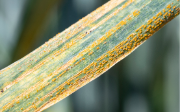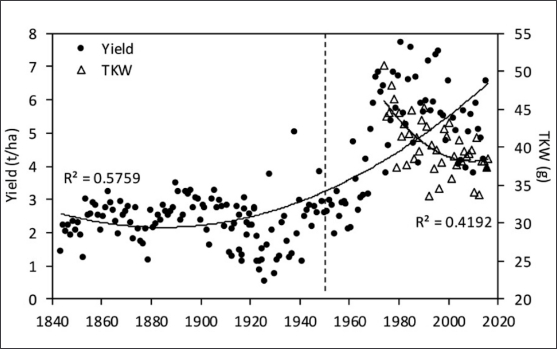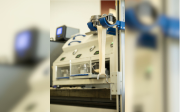For 125 years now the Swiss Confederation has been engaged in the breeding of bread wheat, thanks to which fact productive varieties adapted to Swiss conditions are available.
Creating varieties adapted to the Swiss market which are also competitive throughout Europe.
Criteria taken into account in the breeding programme
- Yield
- Quality: baking, biscuit and fodder quality
- Disease resistance: yellow and brown rust, powdery mildew, Septoria nodorum and Septoria tritici, fusarium head blight
- Resistance to lodging and well adapted to climatic conditions
- Some nutritional aspects (fibres, antioxidants, vitamins, etc.)

The world’s population has doubled in the last 50 years, reaching the 8 billion mark in 2022. Increased wheat yields are a key objective of breeding programmes to feed humanity.

The gene bank is a treasure trove of biodiversity for wheat breeding. It contains many unique cultivars that can contribute valuable traits to the breeding programmes.

Exchanging varieties is a common practice among breeders, who send each other their best cultivars for free. This allows the best traits to be propagated more easily among partners.

The crossing of two wheat cultivars is the cornerstone of any breeding programme. The objective is to combine the positive traits of each parent in the progeny.

Adapting wheat cultivars to their environment is a growing challenge facing breeding programmes. Resistance to extreme temperatures, drought and excess water are indispensable traits for safeguarding production despite climate change.

Producing disease-resistant varieties is a priority, aimed at reducing the use of plant protection products. Resistance to no fewer than 6 diseases is tested during the creation of a new variety.

Each new variety undergoes three bread-baking tests to determine protein quantity and quality as well as dough properties. These tests allow the varieties to be assigned to different quality classes
Publications
Videos

Dario Fossati, il signore del grano
Quattro decenni trascorsi a selezionare il grano per la popolazione elvetica tra sfide climatiche e nutrizionali (RSI, Giardino di Albert, 14.10.2024)











